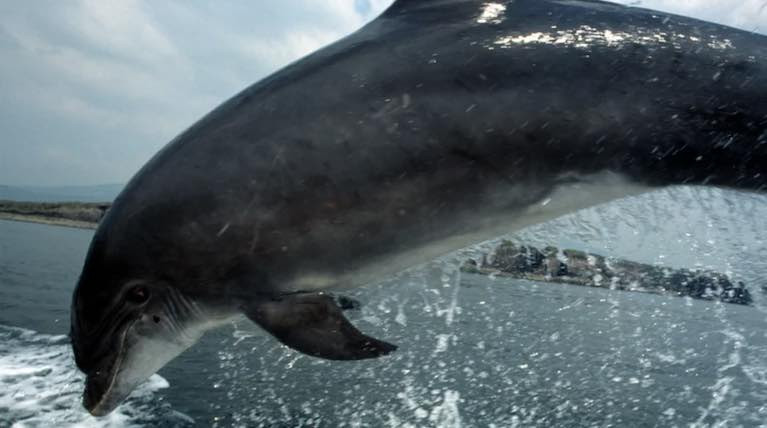Displaying items by tag: Fungi
Fungi and Armada Shipwrecks Focus of Virtual Experience in Dingle, Co Kerry
The owners of a former Dingle fish processing plant have received Brexit-related grant aid towards a 1.3 million euro visitor attraction, which recalls the harbour’s famous dolphin, Fungi.
The Keane family, owners of Ó Catháin Iasc Teo, have invested over €1,355,000 in the project, of which more than €177,000 was grant-aided under the Brexit Blue Economy Enterprise Development Scheme.
The Wild Atlantic Virtual Experience (WAVE), as it is called, offers visitors an “immersive ocean experience”, telling the story of marine life through the eyes of the men and women who have fished off the Co Kerry shores for thousands of years.
 The project is using what is described as Ireland’s “largest 360-degree LED screen” which includes screening of life size computer-generated images of Fungi Photo: Dominick Walsh
The project is using what is described as Ireland’s “largest 360-degree LED screen” which includes screening of life size computer-generated images of Fungi Photo: Dominick Walsh
The project is using what is described as Ireland’s “largest 360-degree LED screen” which includes screening of life size computer-generated images of Fungi.
“The experience also explores shipwrecks and uncovers the myths and legends of the sea, bringing visitors up close to majestic humpback and orca whales, seals, turtles, and other sea life,” BIM says.
It includes a virtual trip through a sunken Spanish Armada ship and German U-boats.
Michael Keane says that “climate change” has hurt the Ó Catháin fisheries business substantially in recent years.
“We were primarily a herring factory, but they have migrated further north due to climate change,”he says.
“There’s almost no stock of herring down here now. We used to work for eight months of the year, now it’s six weeks,” he said.
“We had to do something to stay in business and we knew the fish business and the culture, so we eventually hit on the idea of developing Wave in the 17,000 sq ft building in which we had our fish processing operations,”he said.
“Without the support of the Brexit Blue Economy Enterprise Development Scheme and BIM, we would not have been in a position to make this investment. Since we opened, the reaction has been great,” he said.
“ We will keep developing the experience, and aim to create an iconic international and local market attraction that highlights the best of the Dingle Peninsula, accessible all year, and further enhancing Dingle as a year round destination,”he added.
WAVE can accommodate over 200 tourists per hour and is laid out in five separate rooms, each with its own experience. It aims for 70,000 visitors annually and 16 full-time employees over five years.
The project aims to be carbon neutral by 2028.
“We have installed energy efficiency lights and solar panels,”Keane says.
“There is also a cafe with sustainable packaging and offering locally supplied produce. The building has been designed to easily add further initiatives over the coming years,” he says.
Dingle Hopes Against Hope for Well-Being of Fungie the Dolphin
Everyone in Dingle - and beyond too, in a much wider world of shared joy in his existence - everyone knew that some day, it was going to happen. Some day, the sad but inevitable feeling was going to take hold and gradually be accepted that Fungie, the much–loved Dingle dolphin, has gone - and gone for good not just from Dingle, but from this world of ours.
For 37 years, his life-enchancing and charismatic presence has established a relationship between humans and a cetacean which has been seen elsewhere, but somehow never with the sheer intensity, transcendental delight and very Irish way that Fungi has made possible in Dingle Harbour. No-one who has ever experienced it will ever forget it. But now it may well be that memories are all we’ll have, and this new gem of reporting on RTE News from Sean Mac an tSithigh will speak from the heart for everyone who has met Fungie at his wonderful best.
Some wonderfully nostalgic footage of the early days of Fungie here... might give a sense of the affection the local community has for this special dolphin. https://t.co/yKVKMKIGvx
— Seán Mac an tSíthigh (@Buailtin) October 20, 2020





























































